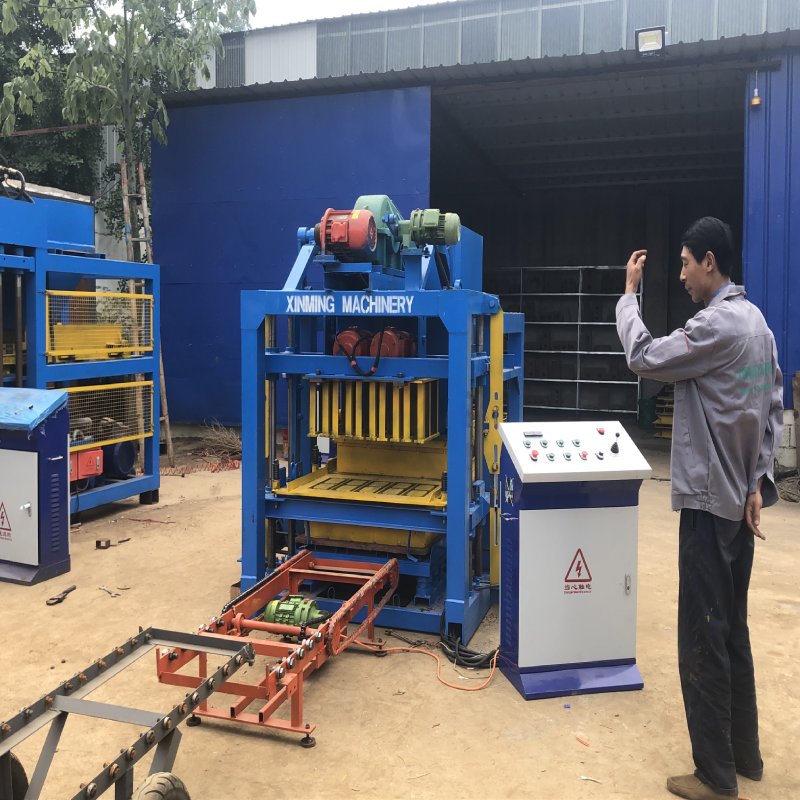
Image source:Aiwei block machine
Introduction
The Chinese brick making machine sector is a highly competitive industry that requires collaboration and partnerships to foster innovation, drive growth, and address industry-wide challenges. Manufacturers, suppliers, research institutions, and government agencies recognize the benefits of working together to develop advanced technologies, share knowledge, and explore new opportunities. This article explores the significance of industry collaborations and partnerships in the Chinese brick making machine sector and highlights some notable examples that have contributed to the industry’s success.
Research and Development Collaborations
Research and development (R&D) collaborations play a vital role in driving innovation in the Chinese brick making machine sector. By partnering with research institutions and universities, manufacturers gain access to cutting-edge research, expertise, and facilities. These collaborations enable the development of new technologies, materials, and manufacturing processes that enhance machine performance, efficiency, and sustainability.
For instance, manufacturers may collaborate with academic institutions to conduct joint research projects focused on energy-efficient kiln technologies, automation systems, or the use of recycled materials. These collaborations foster knowledge exchange and enable manufacturers to stay at the forefront of technological advancements.
Supplier Partnerships
Partnerships with suppliers are crucial for ensuring a stable and reliable supply chain in the Chinese brick making machine sector. Manufacturers rely on suppliers for raw materials, components, and equipment necessary for the production of brick making machines. Collaborations with trusted suppliers help manufacturers streamline their procurement processes, optimize costs, and ensure the timely availability of high-quality materials.
Moreover, manufacturers and suppliers can work together to improve product design and develop customized solutions. Close collaboration allows suppliers to understand manufacturers’ specific requirements and provide tailored products that meet their needs. This partnership-driven approach promotes innovation, quality control, and long-term business relationships.
Industry Associations and Consortia
Industry associations and consortia play a crucial role in promoting collaboration and knowledge sharing among stakeholders in the Chinese brick making machine sector. These organizations bring together manufacturers, suppliers, researchers, and policymakers to address common challenges, set industry standards, and advocate for the sector’s interests.
Through industry associations and consortia, stakeholders can collaborate on research initiatives, share best practices, and collectively address issues such as sustainability, safety, and market competitiveness. These collaborative efforts enhance the overall performance and reputation of the sector while fostering a sense of community and cooperation among industry players.
Government-Industry Partnerships
Government support and partnerships are instrumental in driving growth and innovation in the Chinese brick making machine sector. Governments at various levels provide financial incentives, policy guidance, and infrastructure support to promote technological advancements, environmental sustainability, and industry development.
Government agencies collaborate with manufacturers and research institutions to facilitate technology transfers, provide research grants, and support industry-wide initiatives. These partnerships help create a conducive environment for innovation and encourage manufacturers to invest in R&D, upgrade their manufacturing processes, and adopt sustainable practices.
International Collaborations
Chinese brick making machine manufacturers are increasingly engaging in international collaborations and partnerships to expand their global presence and access new markets. These collaborations involve joint ventures, technology transfers, and strategic alliances with foreign manufacturers, distributors, and investors.
International collaborations offer several advantages, including access to new technologies, market insights, distribution networks, and diversified customer bases. By partnering with international counterparts, Chinese manufacturers can leverage their expertise and resources to enhance their competitive advantage in the global market.
Notable Examples of Industry Collaborations and Partnerships
The China Building Materials Academy (CBMA) collaborates with brick making machine manufacturers to conduct research on energy-efficient kiln technologies and promote sustainable brick production practices.
The China National Building Materials Group Corporation (CNBM) partners with research institutions and international companies to develop innovative brick making machine designs that incorporate advanced automation, digitization, and energy-saving features.
The China Construction Machinery Association (CCMA) serves as an industry platform that facilitates collaboration and knowledge sharing among brick making machine manufacturers, suppliers, and other stakeholders.
Several Chinese brick making machine manufacturers collaborate with international partners to explore overseas markets and establish distribution networks. These partnerships help manufacturers gain a foothold in foreign markets and adapt their machines to meet local requirements.
Conclusion
Collaborations and partnerships are essential drivers of innovation, growth, and sustainability in the Chinese brick making machine sector. Through research and development collaborations, supplier partnerships, industry associations, government-industry partnerships, and international collaborations, stakeholders in the sector can collectively address challenges, drive technological advancements, and explore new market opportunities.
The Chinese brick making machine sector’s success is largely attributed to the spirit of collaboration and the willingness of industry players to work together. These collaborations foster knowledge exchange, enable technology transfers, and enhance the sector’s competitiveness on both domestic and international fronts. As the sector continues to evolve, embracing collaboration will remain crucial for driving further innovation and ensuring the industry’s long-term success.
